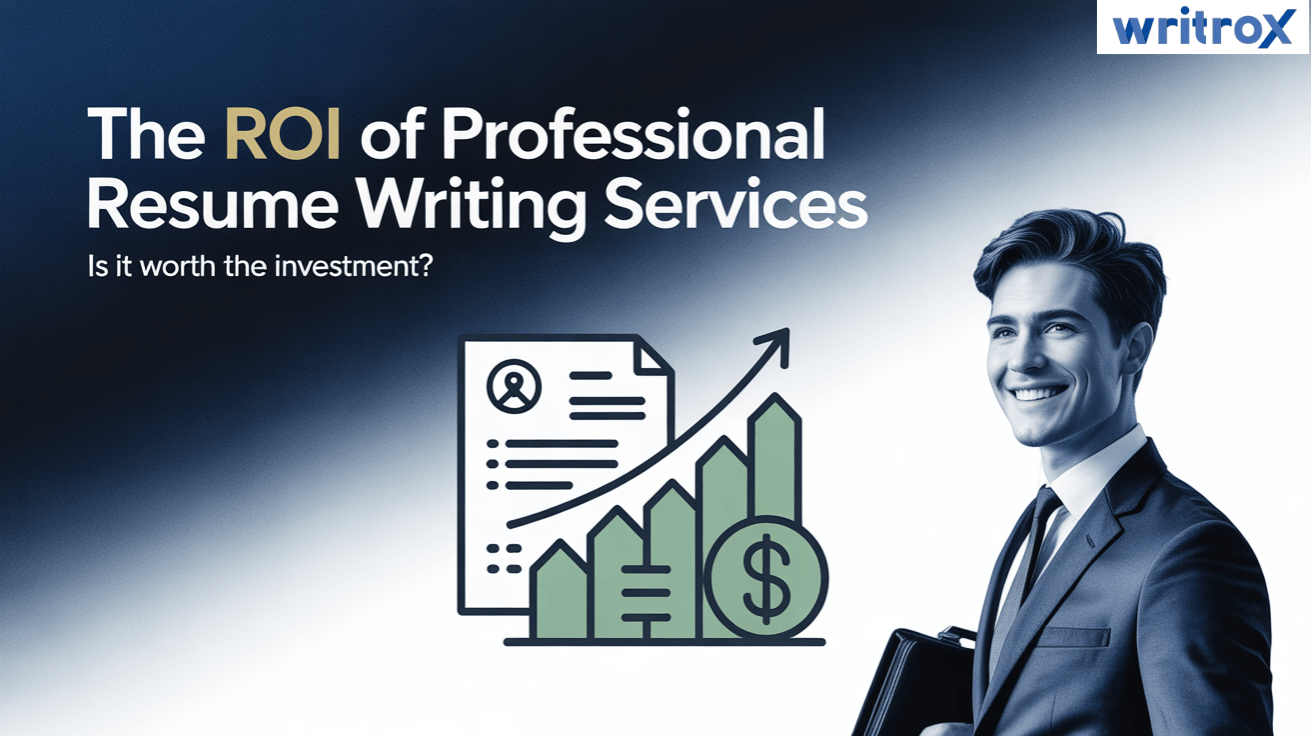According to the prediction of the U.S. Bureau of Labor Statistics, there would be new 115,000 executive-level positions added to the workforce between 2019 and 2029. Based on the calculation, the growth rate of such additions stands at 4 percent- almost as fast as the average job growth rate.
The role of a chief executive officer is more important than any other position at a company. From making policies to leading a team, an executive officer has a lot of responsibilities to consider.
Hence, the resume you submit before the selection committee must portray yourself as a leader, having outstanding management skills. It should also showcase your education, skills, certificates, and achievements well.
But with this fast job growth, the competition is quite high too. Hence, you need to be prepared to face everything that comes before you. Your resume must be professional and strong enough to sail through the ATS or Application Tracking System and land you on the interview.
So, let us guide you through the process of writing the best resume for a high-level executive. But first, let’s start by knowing what an Executive CV is.
What is CEO Resume?
So, what is a CEO resume? It is a type of resume used to apply for some senior or executive-level position in a company. For example, if a company is looking for a chief executive officer or the post of president is vacant, the resume would be the first thing you would need.
What makes a resume for a high-level officer more acceptable at these ranks is its authority. Since you will be taking care of such senior-level positions, your resume must convey the authority people expect there. A strong and professional CV will help your application pass through the ATS. So, it should be an ATS friendly resume.
Why is it important to write the Perfect CEO Resume?
So far, you have got an idea of when you will need an executive-level CV. You only need such a resume when you are going to apply for a senior-level position, such as an executive officer or the president of a company.
So, the purpose of the resume for an executive officer rank is to convey your experience in the field of leadership and to show the authority you may reserve based on your capabilities.
However, there are some other benefits as well.
Understand the importance of your rank!
First, you must remember that the rank you are applying for is important and comes with great responsibilities. Hence, if you want the hiring board to consider your application, you must give them something worthy.
In this case, your past experience, skills, and leadership qualities matter. But, the first impression will only be carried through the resume you present.
It showcases your authority
The resume works as a messenger. The inclusions in the resume show the importance of your presence in their company. Thus, it showcases your authority. And finally, it has something to do with your selection as well.
It gets you on the interview table
When applying for such important positions, it is hard to get a call from the interviewers. But, if you can prepare an attractive resume with all the necessary details, you can crack the stage and make it to the interview table.
Why do most CEO Resumes suck?
The eye-tracking study had found that the lower-performing resumes have these three main characteristics:
- Keyword stuffing
- messy look with little white spaces
- Poor layout
While nearly 24% of recruiters spend less than 30 seconds looking at a resume, it becomes way more important to give them something worthy.
Also, 3/4 of large companies use ATS or Automatic Tracking System to scan a resume for keywords. So, most resumes suck when applicants fail to meet the standards.
One has to understand the sense of responsibility and authority that comes with the position of top-level management. Hence, the resume must have something extraordinary to attract the management. It should always portray you as the most suitable and potential candidate for the position.
But, this is not always the case. As a result, most of the resumes for high-level positions get tossed out. There are a few reasons behind such mishaps- which we may call some common mistakes.
Since it is an executive CV, there are certain points you must include while others should be excluded. The selection of such points plays a vital role in the overall approach.
In most cases, the applicants fail to maintain professionality, which causes the problem. So, let’s go ahead and see what content you should add and avoid at the same time.
Elements of a Perfect CEO resume
First, let’s start with the elements required to build an excellent CEO resume. These elements are the must-have sections that your resume for an executive officer should cover to portray the best first impression to the employer. In most cases, the best executive CVs you get to see have craftily covered and included these points on the paper.
What does CEO mean?
First of all, while working on your resume, you must remember the importance of the post. So, what is a CEO? The chief executive officer is one of the highest ranks in a company. In most cases, a chief executive officer is the one who leads the company ahead.
So, when applying for such a position, you must make a proper good impression on your employers. Therefore, a resume for such a high post must have the quality and content to portray the same. It starts with adding a CEO profile statement.
A chief executive officer profile statement
You have only 6 seconds to grab the attention of your employers. A profile statement is a great way to accomplish the goal. It allows the hiring manager to peek into your overall skills and experience. But why is it so important? Well, first of all, given the reputation of your position, you have to be bold and have leadership qualities.
Hence, you get a few sentences to explain yourself before the board. The state is crucial and should include your executive experience, management skills, and other related skills for the position. You can also include your achievements in the statement and show your overall performance of all these years.
The statement is necessary and must show how reliable and dedicated you are to your profession.
At Least 3-4 Different Work Experiences with Key Roles in Each of Them
An executive rank at a company demands more than just your skills. It is also a matter of the experience and performance of all your professional years. Hence, while making an executive profile, you must include at least 3-4 work experiences in key roles at different companies.
It really does not matter how big or small companies you were in before. The more executive experience you can show, the more chances increase to get a call. After all, your past experience increases the trust factor and puts you in a good position before the hiring board or managers.
Achievements That Are Related to Management
As some senior-level executive, your work will be more about managing a team or a company. Hence, employers would be keener to know your management skills. So, if you have had some achievements in the management field, it would work magic on the resume.
While you may have many achievements in your name, include only those related to the management. For example, you might include that your company’s productivity increased by 30% under your able leadership. Providing employers with numbers helps them estimate your quality as a perfect suitor for the rank.
When you include such achievements related to management as your chief executive officer qualifications and skills, you get a lot of benefits. It increases the trust factor and portrays you as a suitable candidate for the position. So, at least include your 2-3 achievements acquired in the management field.
Higher Education Pertaining to Your Career Enhancement
Highlighting the foundation of your skills is also important. Apart from only having experience, your employers would also like to know what type of education you had to support your career.
Hence, although you have done courses in many subjects, including those that cooperate with your present job would shine better. Remember to keep the resume clean and not fill it with unnecessary details.
Skills That Are of Higher Business Values
Only add the skills which will be helpful for the company and your rank. As an executive officer or some executive officer at a company, you need to care for their business. So, the skills adhering to the growth of businesses will be valued more. A CEO profile must have such skills enlisted to grab the attention of the employers.
Noteworthy Certifications That Are of Business Values
Certificates convey your participation and excellence in various fields. When applying for an executive-level position at a company, you might already have a lot of certificates issued to your name.
But, including all these might not be beneficial. Instead, add the ones which are of high business value. Curating the certificates in this manner will make it easy for your employer to know your credibility.
Consider including extra sections (Awards, Language proficiency, Members of any notable business circles, etc.)
Once you have added all these sections, you have the option to add some more. Use this wisely and put the extraordinary things you know. For example, you might add the awards you received in some convention or competition.
Or, you can also talk about your language proficiency, especially if you know more than 4-5 languages.
Your network also plays a considerable role in getting you selected. And so, if you are a member of any notable business circles, adding that would testify to your networks.
These are some of the extras you can add to your resume to make it more professional. Here are some examples:
Certifications
- 2018 Certified CEO Designation, The Business Value-Oriented Principles Institute
- 2015 Certified Administrator, The Institute of Certified Professional Managers (ICPM)
Awards
- Business Worldwide CEO Awards, 2019
- Best Management Person, The New York Times, 2014
What All You Should Never Include?
Always remember that the final output of your executive resume should be neat and clean. So, just like the things you should include in your resume, there are specific details that you must never mention. Below are the things that you should never include in your CEO resume.
Information about your High School
First of all, the company hiring an executive officer has nothing to do with your high school or primary education. For one thing, when you are going to apply for such positions, your high school level education is already assumed. The school-level education had hardly any courses related to your present profession.
Also, the choice of school hardly has any effect on providing you with a job. Hence, including such details is unnecessary as long as you are going to pose for some higher rank positions. It will only take up more space in your resume that you could have used for other purposes.
List of Generic Skills
Your resume must reflect your hard and soft skills in an attractive way. Hence, adding generic skills to your resume should always be avoided. A person may have a lot of skills. But when you prepare a resume for such a high-level profession, you must include details related to your present profession.
The easiest way to note down such skills is to focus on your management and leadership skills. The rank you are applying for depends on these two key elements. So, while preparing your CEO resume, add your abilities as a chief executive officer by including the most attractive job-related skills.
Reason for Leaving the previous job
There is no need to mention why you left your previous job. This section is unnecessary and will only eat up space. If the board or the interviewers are interested to know the reason, it can be discussed on the table. Only enlist the names of the companies where you have worked before, along with the time span.
Different Types of Resumes
There are primarily three types of resume formats.
- Chronological Resume
- Functional Resume
- Combination Resume
Chronological Resume
A chronological CV focuses more on your chronological work experience. It lists each position that you held in chronological order. Thus, the hiring manager can quickly see how you have progressed in your career.
For example,
Work History
CEO & President
April 2016 – June 2018
Finance Company – Washington
- Diversified and increased revenue of the company by 25% YoY
- Managed $50+ M P&L
- Developed Organization’s vision and guided the planning process to set the directing of achieving the vision
- Oversaw day-to-day operation and ensures technology development and back-office functions.
Vice President, Strategy
February 2014-January 2016
Corporation, Rockville, Maryland
- Prioritize investments in new markets, joint ventures, and potential acquisition targets growing by 23% YoY
- Led and supported global initiatives and brought in a $15 M deal with a new client.
- Served as a member of the corporate strategy team.
Functional Resume
A functional resume focuses more on your professional skills relevant to your present position. Instead of focusing on the chronological work history, the functional resume expands the “Relevant Skill” section.
Here, instead of mentioning your job title, you categorize your skills and put points under to highlight your accomplishments.
For example,
Relevant Skills
Customer Service
- Received +95% positive feedback from customer service surveys
- Enhance the customer experience with in-depth product knowledge.
- Educate customers on upcoming products, brands.
Management Operations
- Led a team of 100+ employees while increasing the sales up to 60%.
- Increased team performance up to 70% and brought the highest ROI in 1 year.
Combination Resume
A combination Resume is a type of combination of both resume types mentioned before. It showcases your skills as a functional Resume while still focusing on your detailed work history.
Steps to Write a Perfect CEO resume
So, that was pretty much all you needed to know before you sit and make your CEO resume. Now, let’s move ahead and learn how to write a resume for a high-level senior executive. Follow these simple steps below.
1. Choose the Best CEO Resume Format
Before you start writing your resume, you need to pick a proper format.
Your goal is to keep your resume as clean and straightforward as possible. It would help your employees to peek into your resume and see the most important details easily.
The easiest format for a resume for chief executive officer follows:
- Contact details on the resume heading section.
- Large and bold headings for important sections on the resume.
- Chronological format for easy reading.
2. Write a Professional Resume Summary or Objective
Now, you have to put a summary that we previously described as the CEO statement. The statement or objective is to help you grab the attention of the board.
There are two things you can use for this section.
First, you can use the resume summary if you have experience of more than two years as an executive officer in some companies.
However, if you lack the experience, you can use resume objectives to show them your career goals. But remember to include one of your past accomplishments as well.
3. Create the Perfect CEO Job Description for a Resume
Your job experience matters a lot when it comes to applying for such a position. This section is extremely important since it gives your hirers an idea of your potentiality. The experience you have gained in these many years speaks for yourself.
For example, you might have been working in a reputed restaurant as a managing officer. Also, you had records of working at different international companies as executive officers or some higher ranks.
Including your job title, description, role, and achievements greatly impact your overall image as a potential candidate. You can follow this format to decorate the job description section.
When listing your job description section,
- start with the most recent job.
- Put your job title above each description
- add some bullet points describing your job responsibilities.
- add power verbs (ex. Achieved, gathered, etc.) to showcase the authority
4. Make Your CEO Resume Education Section Shine
The education section is where you brag about your educational achievements and qualifications, like MBA or other business courses from some reputed institutions. While it is basically listing your academic achievement, you need to follow a proper format.
- Start with your highest degree first and move to the second or third highest.
- Add the institution name from where you had your degree.
- You may add some more details about it, such as location, majors, minors, etc.
Remember, never include your high school education in an executive resume. When applying for such a rank, it is well assumed beforehand.
Here are some examples for you:
Education
- MBA / Master of Business Administration
University of Florida (Warrington), Gainesville, Florida
Completion: 2017
Relevant Coursework: human resources management, financial accounting, international business, real estate, Managerial Economics.
- Bachelor of Science in Business Administration (BSBA)
The University of South Florida, Tampa, FL
Competition: 2014
Relevant Coursework: Leadership Development, Microeconomic Foundation, Management Communication, Legal Studies, and Business ethics.
5. Highlight Your Executive Skills on Your Resume
You need to mention the most appropriate skills that you have related to the position. You can show them your leadership or management skills that might interest them in hiring you as their chief executive officer. Some of these skills are like:
- International Business
- Risk Management
- Management Operations
- Decision-making skills
- Technical skills
As mentioned earlier, don’t include generic skills. Instead, specify your skills related to your position.
6. Add Other Sections to Your CEO Resume
You are almost done with your CEO CV. In short, you have added all the necessary points into your resume, which has given it a strong base. But, you can put in some more ornaments and make it even more attractive.
You can add some extra sections, such as your portfolio record, certifications, awards, achievements, etc. These are the jewels that might work magic if the hiring managers are already impressed by the listings.
7. Attach a Cover Letter for CEO Resume
A resume without a cover letter is next to inefficient, especially when you are applying for such an important position as an executive officer. So, you should always add a cover letter along with your resume.
Plan a proper cover letter format before you start writing. Also, start the letter with a solid and robust introduction and showcase your management and leadership skills. Finally, don’t forget to end the letter with a closing statement.
8. Proofread Your Resume
Before you submit your resume, make sure you give it a proofread. Check for any spelling or grammatical mistakes. Also, you can include or exclude specific points if you like.
The best way to proofread your CEO resume is to get professional help. With Writox’s resume writing services, you will get expert help that will make your resume look more professional.
Conclusion
According to most recruiters, one of the top reasons for rejecting a resume is the lack of customization. 63% of recruiters want a customized CV, perfectly tailored for the open position. So, it becomes quite crucial to meet their expectations.
When you follow this guide on CEO resume writing, you almost get the most done. But, still, for such an important position, leave no stone unturned. Here at Writrox, you get professional help and required assistance in making an ATS friendly resume which will be worth reading!














